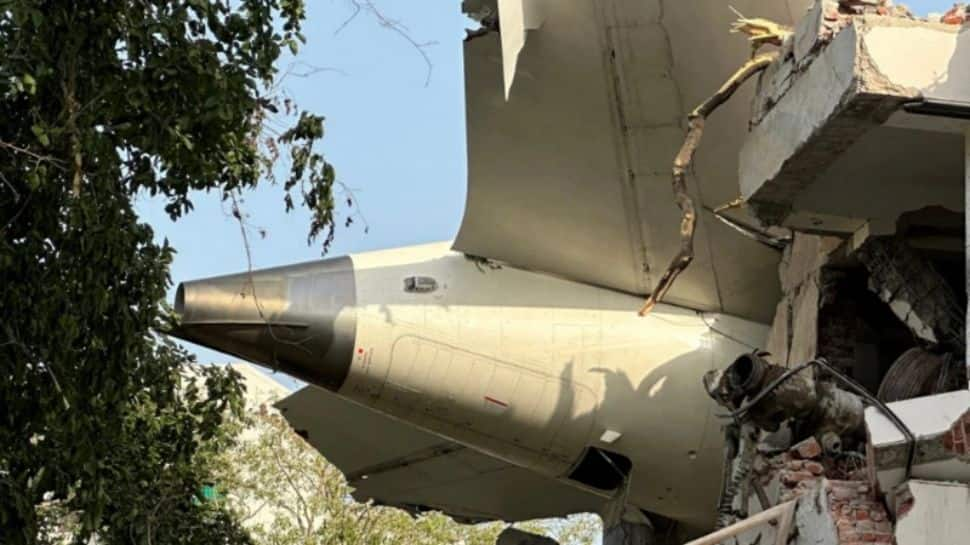New Delhi: Days after a preliminary investigation report into the deadly Air India plane crash pointed to a possible issue with Boeing’s fuel control switch, the U.S. Federal Aviation Administration (FAA) responded by saying that the switches installed on Boeing aircraft, including the Dreamliner, remain safe for use.
The FAA’s statement came after India’s Aircraft Accident Investigation Bureau (AAIB) released its first official findings into the June crash that killed 260 people. The Boeing 787-8 Dreamliner, flying from Ahmedabad to London Gatwick, went down just moments after takeoff.
The report stated that both fuel cutoff switches on the aircraft moved from the ‘Run’ to ‘Cutoff’ position shortly after liftoff, disrupting engine thrust. This, investigators believe, triggered the chain of events that led to the crash.
According to the AAIB, this uncommanded movement of the switches caused both engines to stop receiving fuel. The cockpit voice recorder captured one pilot asking the other, “Why did you cut the fuel?” The response was, “I did not.”
Indian investigators cited a 2018 FAA advisory that had warned Boeing operators to inspect the locking mechanism of fuel cutoff switches to prevent unintentional movement. However, the FAA had not mandated any action.
The AAIB confirmed that Air India had not acted on the 2018 advisory.
The FAA said it had reviewed the AAIB’s preliminary report and acknowledged the advisory was issued because some switches had been installed without locking features. However, the agency clarified that it did not classify the issue as a safety hazard warranting formal airworthiness directives.
The FAA stated that fuel control switches across Boeing models, including the 787, share a similar locking design, and they did not consider the current configuration unsafe. The agency said it would continue sharing findings with other international civil aviation authorities.
Air India also issued a statement expressing solidarity with the families affected by the tragedy. The airline confirmed it had received the preliminary report on July 12 and said it was cooperating fully with all relevant authorities.
The airline’s statement did not comment on the report’s technical findings. It reiterated that Air India remained committed to supporting the investigation and requested that any specific queries be directed to the AAIB.
The crash occurred less than a minute after takeoff from Ahmedabad. The aircraft hit a building near the runway, killing 260 of the 261 people onboard. A ill-fated flight left one survivor.
According to the AAIB, the flight had reached an airspeed of 180 knots when both fuel cutoff switches flipped within one second of each other. Roughly 10 seconds later, the switches were flipped back to the ‘Run’ position that was too late to prevent engine failure.
One of the pilots issued a Mayday distress call, but air traffic controllers received no response. Moments later, the plane crashed.
CCTV footage from the airport showed the aircraft lifting off and immediately losing altitude. Investigators highlighted that the Ram Air Turbine (RAT), a small emergency turbine that deploys to restore hydraulic power, activated just after takeoff, indicating a complete loss of engine power. There were no signs of bird activity or obstruction on the flight path, the report said.
A full report with detailed findings is expected within the next 12 months.
#Air #India #Crash #Boeings #Fuel #Switch #Scrutiny #Agency
Air India Crash, Boeing 787 Fuel Control Switch, FAA Fuel Switch Statement, Air India Flight 171 Accident, Aviation Safety Investigation India, Boeing Crash Scrutiny, Air India Boeing 787 Crash Reason, FAA on Boeing Safety,Air India crash, Boeing 787 Fuel Switch, FAA Investigation, Air India Flight 171, Aviation Safety India, Aircraft Accident Report
latest news today, news today, breaking news, latest news today, english news, internet news, top news, oxbig, oxbig news, oxbig news network, oxbig news today, news by oxbig, oxbig media, oxbig network, oxbig news media
HINDI NEWS
News Source


